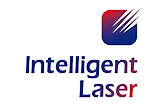Welding has come a long way from the days of manual welding torches and human precision. Today, welding is a highly advanced and automated process, thanks to innovations in technology and the integration of cutting-edge equipment. One such innovation that's transforming the welding industry is the evolution of weld seam tracking sensors. In this blog, we'll explore the future of welding and the exciting innovations in weld seam tracking sensors that are making it possible.
A Glimpse into Welding's Past
Welding is an ancient practice, with its origins dating back thousands of years. Traditionally, skilled welders used their expertise to join metals, a craft that relied heavily on manual precision. However, the welding landscape has evolved dramatically in recent decades.
The Role of Weld Seam Tracking Sensors
Weld seam tracking sensors have played a pivotal role in the evolution of welding technology. These sensors have become increasingly sophisticated, offering real-time monitoring and dynamic adjustments to welding processes. While they have already revolutionized the industry, the future holds even more exciting innovations.
The Innovations on the Horizon
Enhanced Sensing and Accuracy
The future of weld seam tracking sensors will see enhanced sensing capabilities, enabling even higher levels of accuracy. Advanced sensors will be able to detect and track seams with unprecedented precision, reducing the margin for error to near zero.
Integration of Artificial Intelligence
Artificial intelligence (AI) is making its mark in the welding industry. Weld seam tracking sensors will be equipped with AI algorithms that can adapt to changing conditions and provide real-time insights for optimal weld quality. These AI-driven sensors will be able to anticipate potential issues and make adjustments proactively.
Seamless Integration with Robotic Welding Systems
The integration of weld seam tracking sensors with robotic welding systems is a game-changer for industries where automation is prevalent. These sensors will work in harmony with robots, ensuring that the welding process remains precise and efficient, even when dealing with complex workpieces.
Predictive Maintenance
In the future, weld seam tracking sensors will not only track the weld seam but also the condition of the welding equipment. They will be capable of predicting maintenance needs, helping to prevent breakdowns and costly downtime.
Improved Data Analytics
The data collected by weld seam tracking sensors will be used for more in-depth analysis. This will lead to better insights into welding processes, helping companies optimize their welding procedures, reduce waste, and enhance productivity.
Applications of Advanced Weld Seam Tracking Sensors
As these innovations unfold, advanced weld seam tracking sensors will find applications in a wide range of industries and processes, including:
Automotive Manufacturing: Ensuring the precision and quality of welds in vehicle production.
Aerospace Industry: Meeting stringent safety and quality standards for aircraft components.
Construction and Infrastructure: Welding structural components with greater accuracy and reliability.
Energy Sector: Welding pipelines and critical infrastructure for the oil and gas industry.
The future of welding is bright, with innovations in weld seam tracking sensors leading the way. These sensors are propelling welding into an era of unprecedented precision, efficiency, and adaptability. As they become more sophisticated and integrated with AI and other advanced technologies, weld seam tracking sensors are transforming industries that rely on welding for critical applications. This evolution not only ensures high-quality welds but also opens doors to new possibilities in manufacturing and construction.
